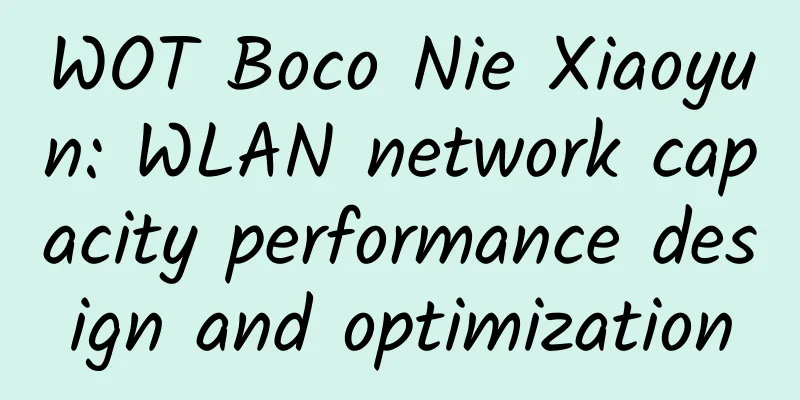Key considerations for deploying Wi-Fi 6

|
IT managers looking to benefit from Wi-Fi 6 technology must consider a number of issues that will determine how to best implement the next-generation wireless infrastructure. In a nutshell, Wi-Fi-6 (also known as 802.11ax) is the evolution of 802.11ac. After years of development, the new specification has four times the throughput of its predecessor, energy-saving technology, support for more devices, and improved efficiency.
Challenges For many Wi-Fi 6 implementers, their efforts are driven more by the greater efficiency required for traffic management and high-density networks than by higher data rates and larger channels. This is because previous versions of 802.11 created too much overhead at the MAC sublayer and created medium contention overhead for each small frame. Although the Wi-Fi 6 ecosystem is not yet sound, the appeal of this standard has attracted widespread attention from companies in vertical industries. Faced with a growing user base and increasing traffic, some large public venues have begun to deploy this new technology. The Wi-Fi Alliance has started Wi-Fi certification testing, which covers major network infrastructure such as access points (APs) and routers. What is your build approach? Venues without Wi-Fi (and there are many) can simply implement a brand new top-to-bottom 802.11ax network without having to worry about legacy wireless systems. Those professional sports venues that are upgrading, at least, are taking the rip-and-replace path rather than mixing newer Wi-Fi 6 equipment with older wireless infrastructure. Consider the third deployment option Wi-Fi 6 offers backward compatibility with previous standards, such as 802.11ac and 802.11n. Therefore, early Wi-Fi 6 networks can add 802.11ax APs and routers to replace older infrastructure. Instead of a complete flash conversion, businesses can choose to mix new and old Wi-Fi equipment to work properly for the next few years. Mixed network results For IT managers, the benefits that enterprises gain from networks with 802.11x and older clients are a mixed bag. The good news is that performance will be improved thanks to the hardware features of Wi-Fi 6 APs. They include more powerful CPUs and better memory handling. The bad news is that adding 802.11ax APs to a Wi-Fi network will not provide the high-efficiency features that come with the new specification. As more 802.11ax clients are mixed into the client population, the efficiency gains gained by 802.11ax client devices will free up valuable airtime for those older clients, improving the overall efficiency of the system. Release time Two years into the hybrid network may seem like a long time. However, consumer device manufacturers are lagging behind network infrastructure manufacturers when it comes to Wi-Fi 6-enabled transmitting units (smartphones, laptops, etc.). These consumer electronics vendors often prioritize larger screens, advanced camera features, and longer battery life. Don’t forget to consider how long consumers will use their devices before making the change. Chip availability Meanwhile, chipmaking giants Qualcomm and Broadcom have been driving the development of Wi-Fi 6 since last year, both through chipsets and the network infrastructure powered by the chips. Qualcomm launched its Wi-Fi-enabled chips in February, and in late August, Dell announced updates to its premium laptops that include Intel's Wi-Fi 6 chipsets. Artificial Intelligence and Machine Learning One key area where early implementers need help is in network management, as the people performing the tasks are looking to AI and machine learning as technologies to simplify and optimize their jobs. The importance of network management has increased given the higher density of devices being deployed, the higher throughput being supported, etc. Enterprise network administrators want to be able to create network baselines and then set thresholds that, if met or exceeded, can generate alerts for quick addressing. Leveraging AI and machine learning will represent a huge leap forward in Wi-Fi traffic management, providing analytics that IT architects can use to take preemptive action. The ultimate goal is to automate the network for those who spend too much time on tedious management procedures. |
>>: Learn about the last of the four types of switch messages in one minute: known unicast
Recommend
Uncovering the Cost of Cyber Attacks in the 5G Era
With the advent of the 5G era, smart IoT devices ...
F5 Future
[51CTO.com original article] Expert introduction:...
Industry 4.0 is driving enterprise fiber access
Industry 4.0 has brought with it a wave of value-...
User complaints have dropped significantly, so why can’t operators smile?
[[403552]] This article is reprinted from the WeC...
SmartHost: $4.95/month KVM-quad core/8GB memory/40GB NVMe/2TB monthly traffic/29 data centers available
SmartHost recently offered special discount codes...
Working together: Two ways Wi-Fi and 5G can coexist
WBA: Wi-Fi and 5G coexist at the physical layer o...
With the launch of 5G and Wi-Fi 6, where will wireless network products go?
Today, topics about 5G and Wi-Fi are endless, and...
Case sharing | Application and construction of Ruishu dynamic security hyper-convergence platform in the financial industry
The process of financial digitalization is accele...
80VPS: Hong Kong dedicated server starting from 350 yuan/month, optional IID/Cloudie/Kowloon/Shatin/CTG/CN2/large bandwidth/high defense, etc.
Last month we shared information about VPS hosts ...
Why Thread will unify IoT communication protocols in the future
Various devices connected to the Internet of Thin...
How to change ssh port in CentOS7.*
I checked the port modification records in the si...
Secada releases the latest 2017 global Chinese PC antivirus software detection and killing capability evaluation report
Recently, the internationally renowned third-part...
The wave of data center upgrades is coming, and an excellent "trendsetter" needs to figure out these things!
[51CTO.com original article] In 2017, "digit...
10gbiz: Hong Kong/Los Angeles VPS 40% off in August, starting at $2.36 per month, 258IP cluster server half price for the first month
10gbiz is a hosting company founded in 2020, prov...
Facing Huawei 5G, the United States is showing its hand
Originally, in the context of the "big cake&...



![[Black Friday] Friendhosting 45% off on all VDS hosts, 40% off on virtual hosts, 10% off on renewals for old users + free time](/upload/images/67cac2485c89c.webp)





